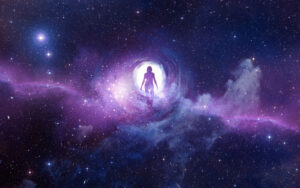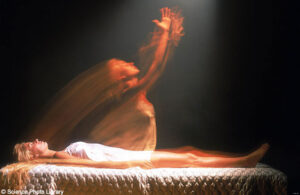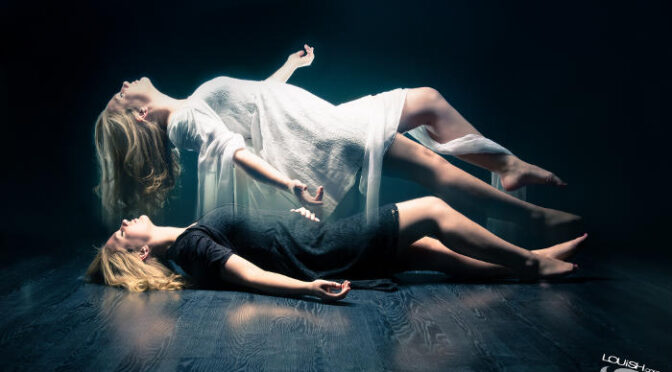The term ‘out of body experience‘ (OBE) was coined in 1943 by George N.M. Tyrell in his book Apparitions. It is basically the soul’s endeavors outside the body, and can occur during periods of dreaming, psychedelic experiences, sensory deprivation, conscious astral projection or near death experiences.

Early researchers Celia Green and Robert Monroe adopted this term as an alternative to belief-centric phraseology. Studies have confirmed that at least 10% of the human population has had an OBE, but in most cases if someone has had one, they have had several.
In history, such greats as Thomas Edison and Salvador Dali are known to have employed OBEs in the creative process.
There have been several documented methods by which one might induce an OBE. Binaural beats at a frequency of 4 Hz were observed as effective by the Monroe Institute, and many other researchers support the use of this technique in conjunction with others as away of induction.
Also, stimulation of the brain has been used, via magnetic, direct, or electrical stimulation, to achieve these states.

Perhaps the easiest way for the layman to enjoy the wonders of the OBE would be to employ sensory deprivation, sleep training, or metaphysical methods outlined in this or any number of spiritual websites.
Through recent experiments, science is coming closer to understanding the out of body experience, lending credibility to a phenomenon that has heretofore been relegated to the realms of spiritualists.
It seems like the out of body experience has finally entered the popular consciousness.
In this video, Science on the Web explores the hard science behind out of body experiences:

